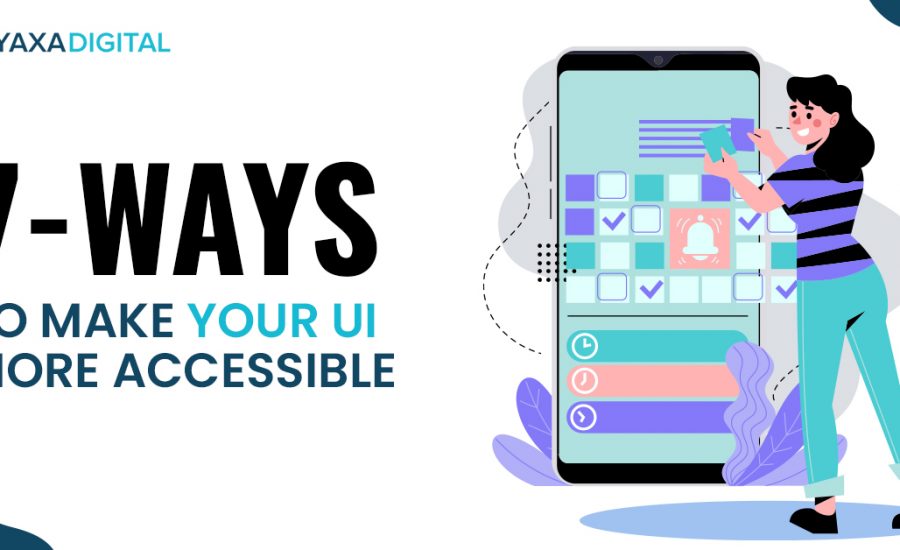
7 Ways to Make Your UI More Accessible
The advent of digital products has transformed the global landscape, enhancing the accessibility of information. However, the question arises: is the user experience inclusive for all?
The primary objective of a UI (user interface) designer is to ensure an exceptional experience for every user, regardless of their proficiency. According to the World Health Organization (WHO), approximately 285 million people grapple with visual impairments, while 110 million to 190 million adults face significant mobility challenges. Moreover, a staggering 360 million individuals worldwide contend with hearing loss.
Diverse individuals, representing various backgrounds, navigate your website or app with the expectation of swiftly and efficiently finding what they seek. The Interaction Design Foundation highlights five crucial areas of usability that must be taken into account: visual, motor/skill, auditory, seizure, and learning.
How can you enhance your UI design to cater to the needs of a diverse audience? Consider the following steps to ensure that your UI design is more accessible to everyone.
Focus on Visual Hierarchy
By emphasizing contrast and color appropriately, you can achieve a well-balanced user interface with a clear visual hierarchy. This ensures that elements maintain an organic relationship, allowing the most crucial ones to stand out immediately. Secondary elements then contribute to the overall narrative map.
To establish an effective visual hierarchy, carefully consider the positioning of UI elements in your web design and create coherent relationships among them.
Avoid overcrowding your screen to prevent user intimidation.
Ensure content scalability for visually impaired individuals who may need to zoom in on on-screen elements.
Keep call-to-action buttons concise and straightforward.
Position crucial information at eye level for the best visibility. Employ suitable headings to categorize related content, using space and proximity to clearly indicate relationships between content.
Include Alt Text for Images
Ensure the addition of alt text to images to enhance accessibility for individuals with visual impairments. According to Moz, effective alt text should be concise, as most screen readers limit text to approximately 125 characters. Keeping within or below this limit is advisable. Notably, Instagram garnered attention by introducing an alt-text feature on its platform. This development signifies a shift towards making accessible user interfaces the standard rather than a passing trend.
Responsive Design for Mobile Accessibility
Given that mobile devices contribute to over half of all web traffic, it is crucial to prioritize a responsive and mobile-friendly website. Failure to optimize for mobile experience increases the likelihood of a user abandoning the site by five times. Neglecting to cater to mobile users means potentially excluding a significant portion of potential customers from engaging with your website.
Clear and Consistent Navigation Options
Ensuring a seamless navigation experience is crucial for website accessibility.
Maintain consistent naming, styling, and positioning of navigation options across your site pages. Offer users accessible features like a site search or site map. Facilitate user orientation on your site or page by incorporating directional cues such as breadcrumbs and headings.
User Testing
While the web UI may appear accessible and seem easy to navigate, the true test comes when a real user engages with it. User testing offers numerous advantages, as it reveals the actual functional limitations of the design and allows for the identification of potential solutions.
This phase presents an opportunity to enhance design accessibility by delving into research, exploration, and understanding of how real individuals interact with the interface.
Design Accessible Forms
Filling out forms with confusing inputs, unclear formats, or cryptic error messages, especially when coupled with inaccessible keyboards, can be a tedious experience. To ensure a positive user experience, make sure that the forms on your website are easy to fill out, eliminating obstacles and preventing frustration.
Ensure Easy Identification of Interactive Elements
Differentiate interactive elements, like links and buttons, by employing distinct styles to enhance recognition. Modify the appearance of links for mouse movement, keyboard focus, and touchscreen activation. Consistently maintain the style and nomenclature of interactive elements throughout your website.
Conclusion
Accessibility is a universal concern that impacts everyone. Prioritizing the diverse needs of all users is a crucial stride towards creating truly exceptional mobile apps and websites. By implementing the aforementioned tips, you are on the path to prototyping and designing more enriching user experiences.
Main Keywords:
- UI Design
- Mobile Accessibility Website
Keyword Density:
- UI Design
- User Experience
- Visual Hierarchy
- Mobile Accessibility
